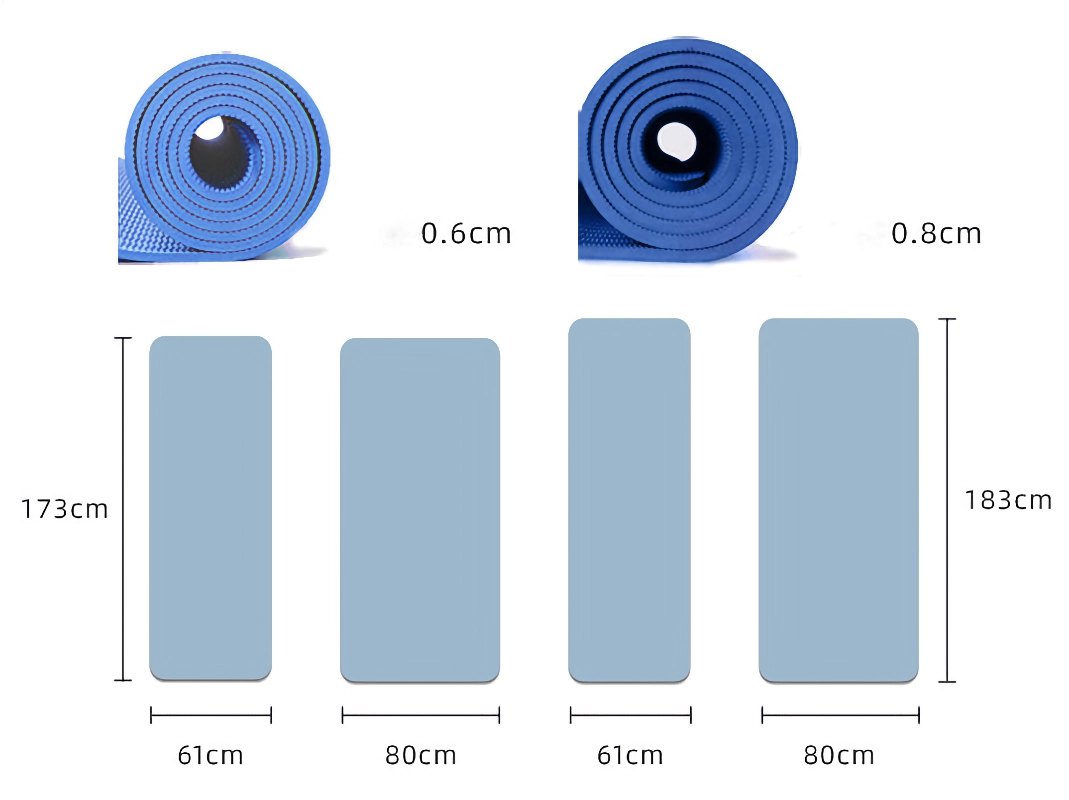Yoga enthusiasts are increasingly turning to TPE (Thermoplastic Elastomer) mats for their practice, and it’s not without reason. TPE mats offer a combination of superior grip, cushioning, and environmental benefits that set them apart from traditional EVA (Ethylene Vinyl Acetate) mats. If you’re wondering which mat is best suited for your yoga journey, let’s delve into why TPE mats might be the perfect choice.
Superior Grip and Cushioning with TPE
One of the standout features of TPE mats is their excellent grip. Whether you’re practicing a downward dog or a warrior pose, TPE mats provide a stable surface that helps prevent slips and supports your poses with confidence. This enhanced grip is particularly beneficial for hot yoga sessions or practices that involve dynamic movements.
Moreover, TPE mats offer optimal cushioning without compromising stability. They provide just the right amount of support to protect your joints while maintaining a firm foundation for balance poses. This balance of cushioning and stability makes TPE mats versatile and suitable for practitioners of all levels.
TPE vs. EVA: Which is Better for Your Body?
When comparing TPE and EVA mats, it’s crucial to consider how each material affects your practice and overall well-being. TPE mats are known for being free of harmful chemicals like PVC and latex, making them hypoallergenic and safer for those with sensitivities. In contrast, EVA mats may contain traces of chemicals that some users find undesirable, although they are generally considered safe for most people.
From a comfort standpoint, TPE mats often provide better cushioning and resilience over time compared to EVA mats. They maintain their shape and thickness even with regular use, ensuring consistent support for your yoga practice.
The Future of Yoga Mats: TPE Leads the Way
Looking ahead, sustainability is a key factor shaping the future of yoga mats, and TPE mats are leading the charge. TPE is a recyclable material that can be repurposed into new products, reducing environmental impact compared to mats made from non-recyclable materials like EVA. Additionally, TPE production typically involves fewer resources and emits fewer harmful chemicals into the environment, aligning with eco-conscious practices.
As yoga practitioners increasingly prioritize sustainability alongside performance, TPE mats offer a compelling choice that meets both criteria. By opting for a TPE mat, you not only enhance your practice but also contribute to a more sustainable yoga community.
In conclusion, whether you’re seeking superior grip, cushioning, or eco-friendliness, TPE mats deliver on all fronts. Their ergonomic design and environmental benefits make them a standout choice for yogis looking to elevate their practice. Make the switch to TPE and experience the difference firsthand in your next yoga session.
Explore, customize, purchase, and wholesale TPE Yoga Mats products.
FAQ
1. Are TPE yoga mats environmentally friendly?
TPE mats are generally considered eco-friendly because they are recyclable and free from PVC and latex.
2. How does TPE compare to EVA in terms of durability?
TPE mats often maintain their shape and cushioning better than EVA mats over time, providing longer-lasting support.
3. Are TPE mats suitable for hot yoga?
Yes, TPE mats offer superior grip even during hot yoga sessions, helping to prevent slips.
4. Do TPE mats contain harmful chemicals?
TPE mats are typically free from harmful chemicals, making them a safer choice for users with allergies or sensitivities.
5. Why choose a TPE mat over other materials?
TPE mats combine excellent grip, cushioning, and sustainability benefits, making them a versatile choice for yoga practitioners.
